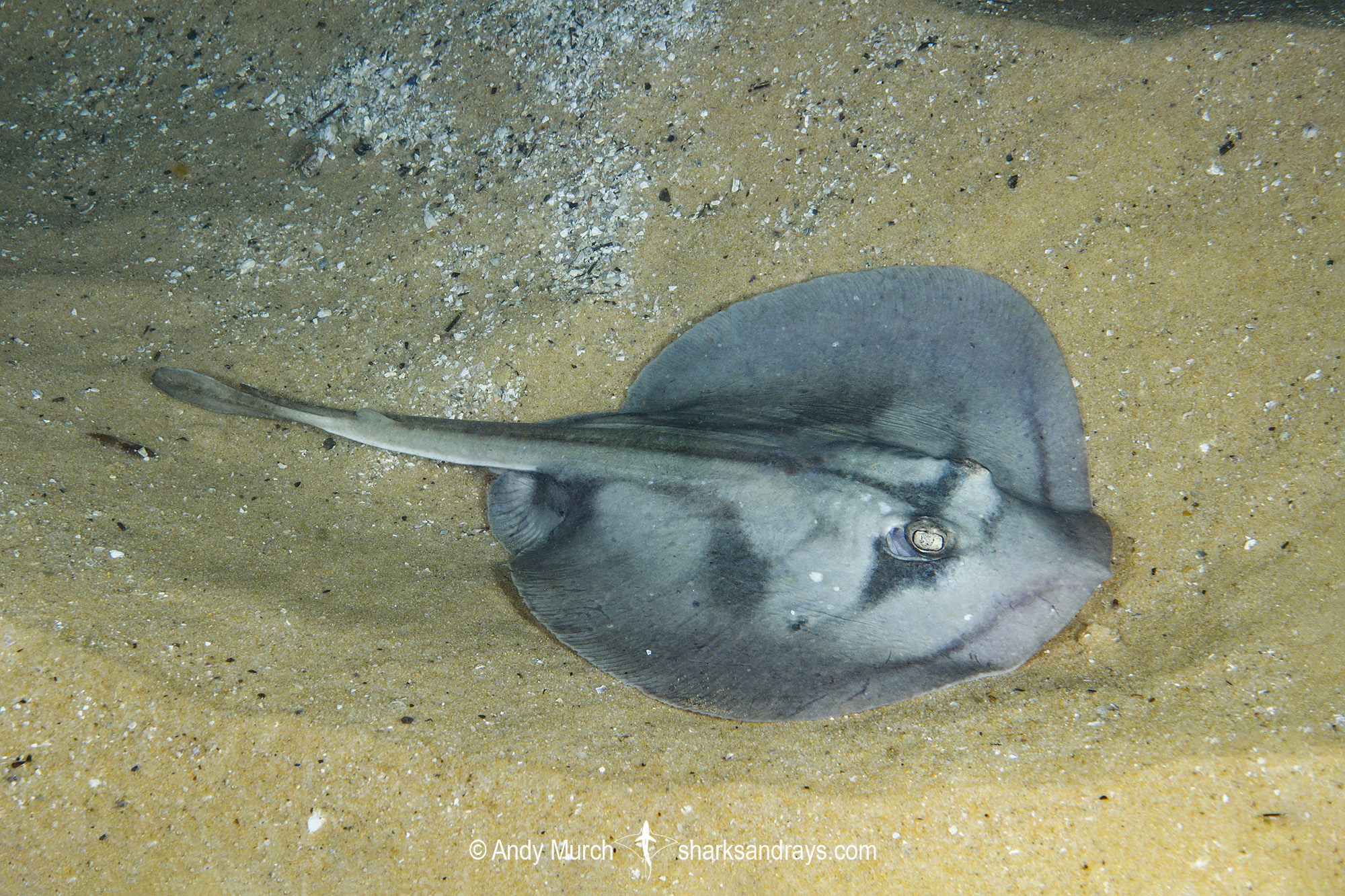Common name(s)
Kapala Stingaree.
Identification
A medium-sized stingaree with a rounded kite-shaped disc that is slightly wider than long. Snout pointed; obtusely angular. Anterior margins of disc straight, apices broadly rounded. Disc completely smooth.
Eyes small; orbit length 0.22-0.29 x snout length. Spiracle origin anterior to mid-eye. Mouth small. 5-7 oral papillae on mouth floor. Nasal curtain bell-shaped, extended posteriorly into a short lobe, posterior margin weakly fringed. No fleshy lobe on each nostril.
Tail broad based and relatively long, length appoximately 0.85 x disc length, oval in cross section, depressed at base. Dorsal fin absent. Caudal fin long and deep, with a narrowly rounded tip.
Colour
Dorsum greenish brown to light brown with pinkish hues near disc margin. Bold dark patch extends laterally from below each eye. Duskier markings form a triangle between eyes that thins and extends posteriorly along centre line. Younger animals often have an additional dusky band posterior to anterior margin and a dusky blotch on each pectoral fin. Ventrum white with dusky outer margins.
Size
Total length 52cm. Length at birth 15cm.
Habitat
Tropical / temperate seas. Usually found on soft substrates, often adjacent to rocky reefs from 10-130m.
Distribution
Southwest Pacific Ocean. The kapala stingaree occurs in eastern Australia from Cape Moreton, Queensland to Disaster Bay, New South Wales.

Conservation Status
NEAR THREATENED
Although not directly targeted, the Kapala Stingaree is under significant pressure from numerous ground fisheries operating in NSW and Queensland, especially inshore trawling.
Stingarees have no commercial value in Australia and are generally discarded, but post-release survival is low. Surveys indicate that the population of Urotrygon kapalensis has decreased by 20-30% over the last three decades.

Reproduction
Viviparous, probably with trophodermic nutrition. Litter size unknown.
Diet
Probably small benthic invertebrates.
Behavior
Poorly known.
Reaction to divers
Skittish. Generally moves away before being approached closely but sometimes tolerant if approached carefully.
Diving logistics
Although the kapala stingaree is present in southern Queensland, it is more commonly encountered by divers in southern NSW (e.g. Jervis Bay and Merimbula) where it is usually found in sandy areas adjacent to reefs.
What’s new
View our full list of updates
Similar species
Banded Stingaree Distinguished by similar but more elaborate pattern including a cross-shape on posterior back, and more westerly range.
Sparsely-spotted Stingaree Distinguished by duskier markings around eyes and scattered, light, irregular spots (not always present).




